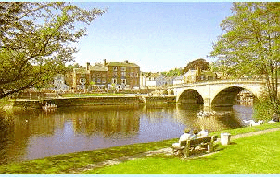Palindromes

I was in Bewdley, in Worcestershire recently. It's a very old town and well known for a pretty bridge over the river in the centre of town. But it's also known for another reason, one that most people don't know about. Mr Edward Benbow, from Bewdley, once held the palindromic record! "The what?" you may be asking.
A palindrome is a word, sentence or verse that reads the same forward or backwards, that is to say from right to left and left to right. EVE and ANNA are both short palindromic names, then there's HANNAH and BOB. You probably have some palindromic people in your family! Not sure? Well how about MUM or DAD, and you might even have a SIS!

Was it a car or a cat I saw? The letters need a little adjusting, but that is a palindromic sentence, or rather question.
Mr Benbow put together 22,500 words to make a "palindromic composition"! They don't make a great deal of sense but that's a lot of words to read backwards.
Numbers can also be palindromes. For instance 121, this can be read back![]()
Try this:
1. Write down any number that is more than one digit. (e.g. 47)
2. Write down the number reversed beneath the first number. (47+74)
3. Add the two numbers together. (121)
4. And 121 is indeed a palindrome.

Try a simple one first, such as 18.
Sometimes you need to use the first addition answer and repeat the
process of reversing and adding.
You will nearly always arrive at a palindrome answer within six steps. Try one of these numbers 68 or 79.
If you choose a number greater than 89 arriving at the palindrome answer takes more steps but it still works.
But don't try 196! In fact, avoid it like the plague.... A computer has already gone through several thousand stages and still hasn't come up with a palindrome answer!
I wonder if you can think how many 2 digit palindromes there are? How about finding all of the 3, 4, 5 or 6 digit ones? How about to a million digits! Some people have already beaten you to that, you'll be glad to know. You can find the results of their work on the web here .
Don't get palindromes mixed up with inversions . Inversions describe numbers that read the same upside down as the right way up. Look at these examples:

Can you think which year in the last century read the same when inverted? How about a year in the century before last? When will the next one occur?
So how and where did the idea of Palindromes come from? Well we know a great deal more about word palindromes. The word itself is from the Greek palindromus , which means to run back again. The 
